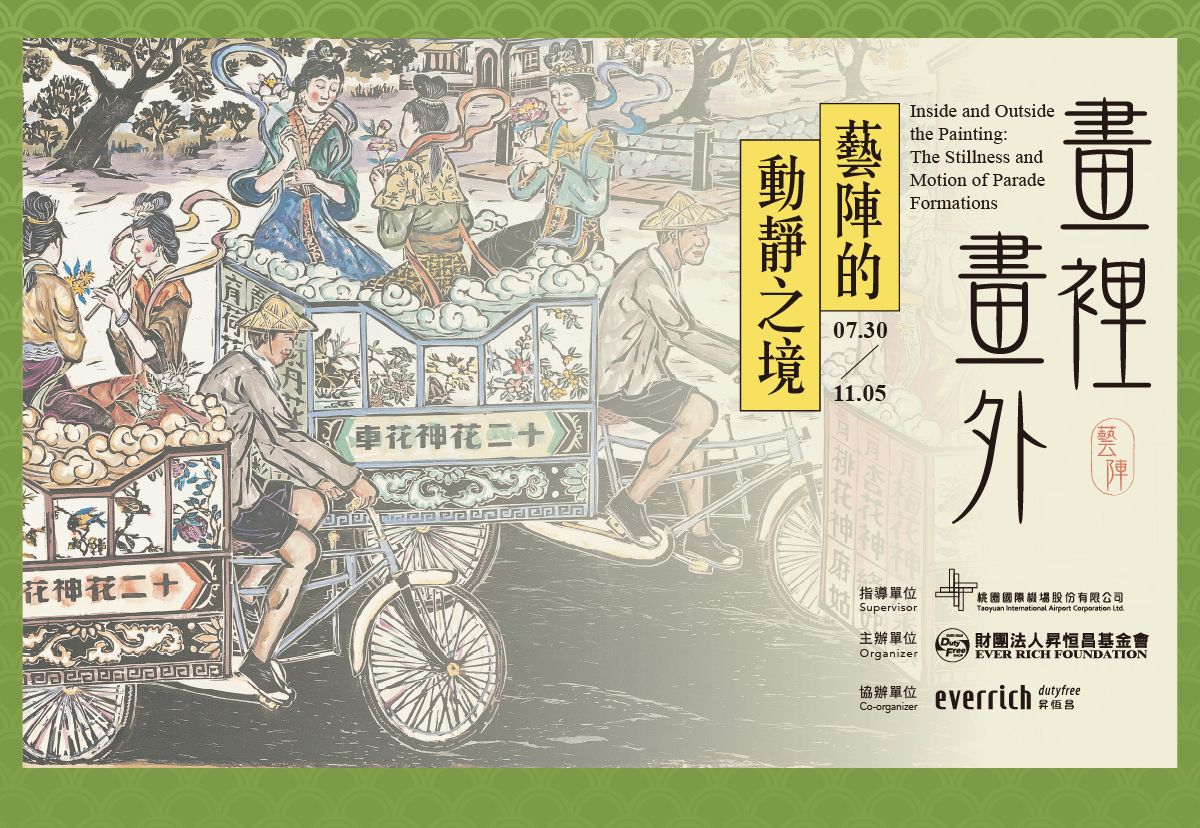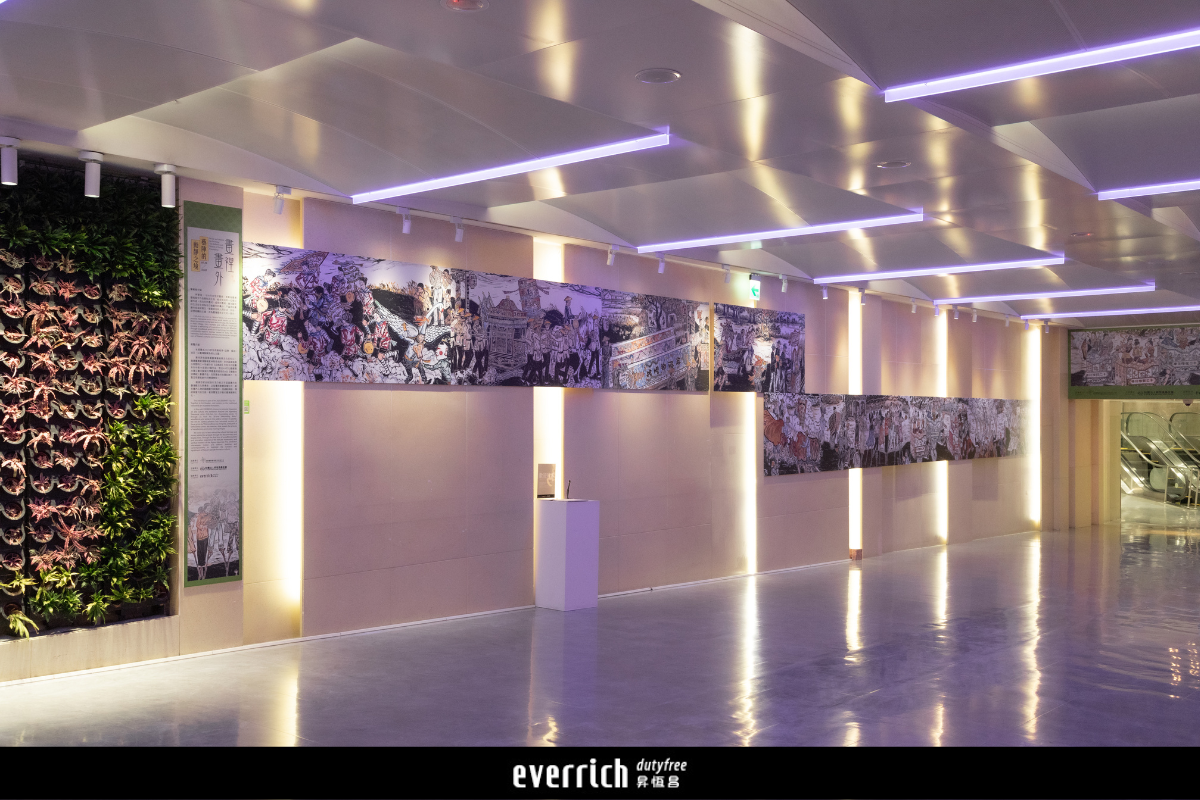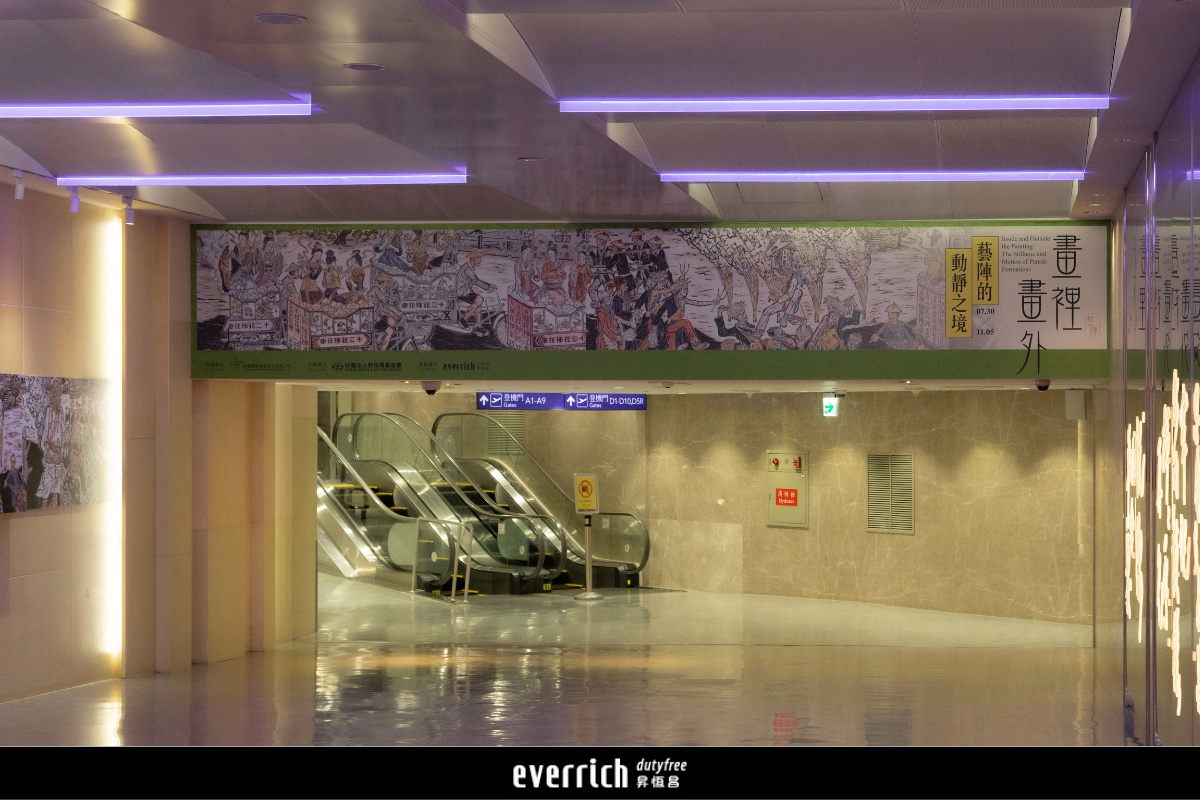Inside and Outside the Painting: The Stillness and Motion of Parade Formations
2025.07.30 - 2025.11.05

This exhibition, titled
In line with EVERRICH’s mission to promote Taiwanese art and culture, this exhibition features the legendary Taiwanese artist Chih-hsin Lin, showcasing pieces 14 through 22 from his 20-year “Welcoming Mazu (迎媽祖)” woodblock print series in this gallery corridor. In parallel, the Cultural and Arts Gallery (A9) presents four animated versions of these prints (會動的迎媽祖) by TNUA professor Jia-ming Day, along with a behind-the-scenes documentary that reveals the process of transforming prints into moving images.

We invite you to learn about the cultural heritage and stories behind the artworks through the documentary and display texts. Through the dual lens of woodblock prints and animation, experience the delicate movements and spiritual essence of the figures depicted. This exhibition interweaves motion and stillness, tradition and contemporaneity to highlight the richness and significance of Taiwan’s parade formation culture.

During the Ming and Qing dynasties, Han immigrants brought deity statues from their homelands to Taiwan in search of spiritual peace. To honor the gods and enrich community life, they revived and passed down parade formation traditions, which eventually developed into today’s wide variety of martial and civil formations seen throughout Taiwan. These formations include what are commonly referred to as the dragon and lion dances – Dragon Formations and Lion Formations – as well as the Eight Police Officers (Pa Chia Chiang) and Guardian Generals, who are costumed performers accompanying deities during processions to protect local communities. Also featured are highly skilled martial troupes such as the Song Jiang Battle Array and the Gold-Lion Battle Array, along with the melodious and festive music of Nanguan (southern musical style) and Beiguan (northern musical style) ensembles, as well as Opening Drum Formations that lead each procession. Passed down through generations in Taiwan’s folk society, these Parade Formations in Folk Art (藝陣文化) have evolved into an essential and irreplaceable component of contemporary Taiwanese culture.

Supervisor: Taoyuan International Airport Corporation Ltd.
Organizer: EVERRICH Foundation
